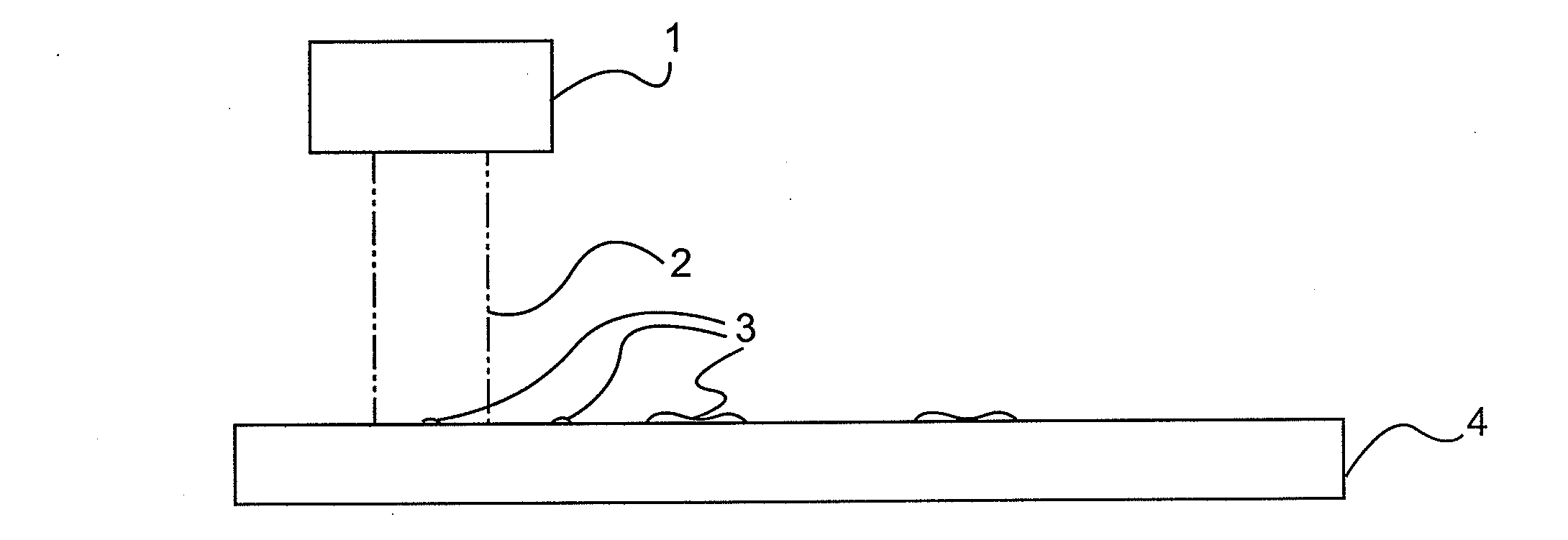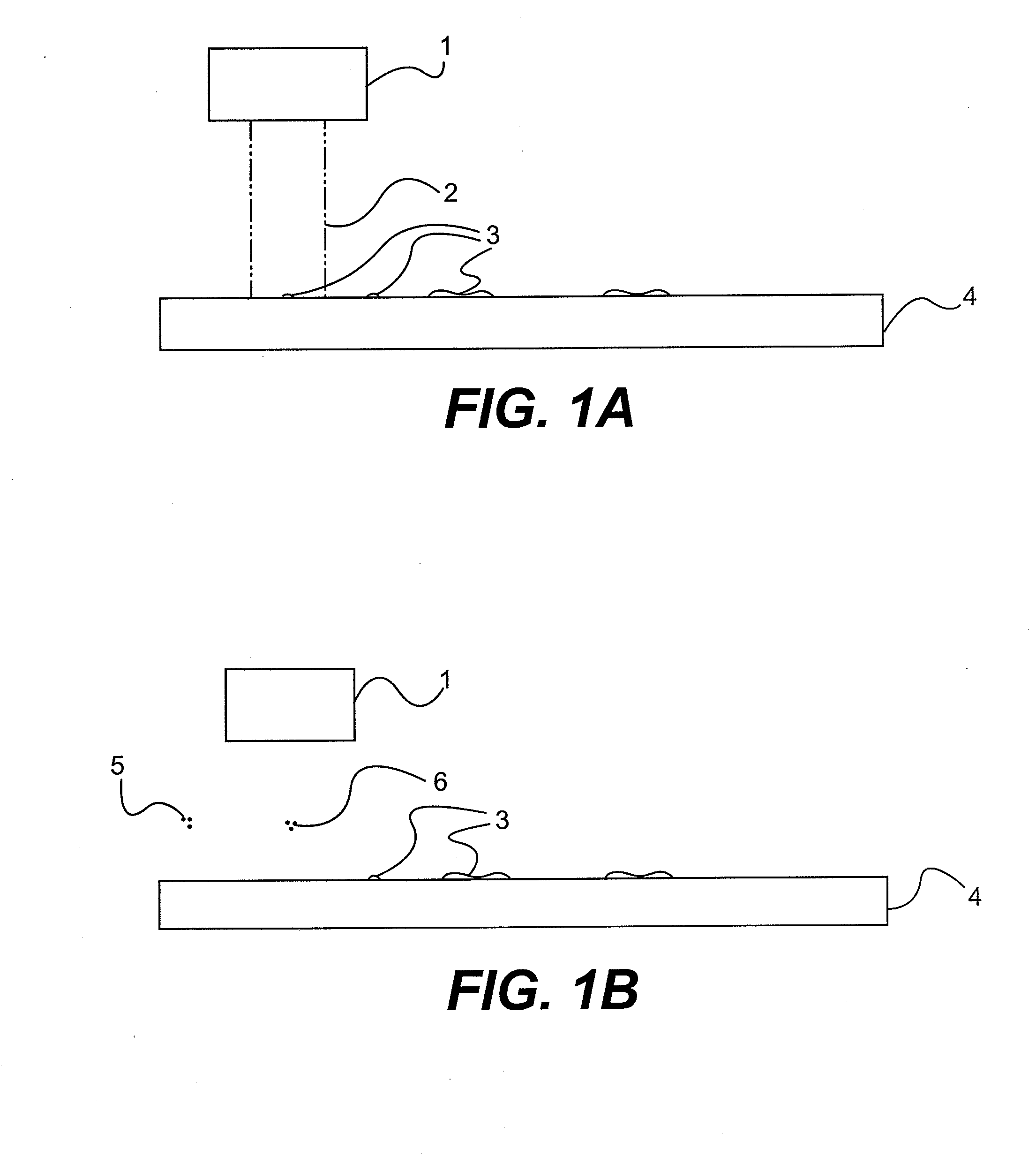Apparatus and method for indirect surface cleaning
a surface cleaning and apparatus technology, applied in the field of apparatus, can solve the problems of significant increase in problems, limited application of systems, and limited ability to end the removal process at the substrate interfa
- Summary
- Abstract
- Description
- Claims
- Application Information
AI Technical Summary
Benefits of technology
Problems solved by technology
Method used
Image
Examples
Embodiment Construction
[0059]The invention will now be described with reference to the drawing figures, in which like reference numerals refer to like parts throughout. According to certain embodiments of the present invention, a method for laser surface cleaning with a reduced risk of substrate damage is provided.
[0060]FIG. 1A illustrates an embodiment of the present invention in which an excitation energy 2 comes from an energy source, such as a laser 1 and is directed towards the contaminated substrate's 4 surface resulting in thermal transfer from the substrate's 4 surface to the contaminating particulate 3 or contamination layer (e.g., by convection or conduction). However, energy sources other than laser may also be used (e.g., lamps and other devices that can radiate energy all along the electromagnetic spectrum may be used, including generators or x-rays, microwaves, infrared radiation, near-ultraviolet radiation, etc.). Also, the surface may be of any material (e.g., the surface of a silicon wafe...
PUM
| Property | Measurement | Unit |
|---|---|---|
| Temperature | aaaaa | aaaaa |
| Width | aaaaa | aaaaa |
| Wavelength | aaaaa | aaaaa |
Abstract
Description
Claims
Application Information
 Login to View More
Login to View More - R&D
- Intellectual Property
- Life Sciences
- Materials
- Tech Scout
- Unparalleled Data Quality
- Higher Quality Content
- 60% Fewer Hallucinations
Browse by: Latest US Patents, China's latest patents, Technical Efficacy Thesaurus, Application Domain, Technology Topic, Popular Technical Reports.
© 2025 PatSnap. All rights reserved.Legal|Privacy policy|Modern Slavery Act Transparency Statement|Sitemap|About US| Contact US: help@patsnap.com



